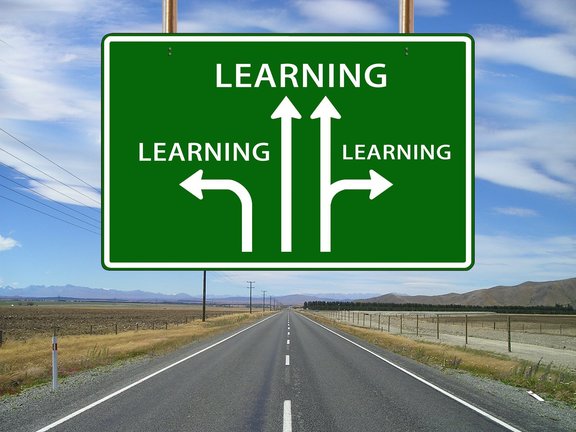Learning intentions and success criteria: less stress and more success
By Editor on October 19, 2021 in Assessment for learning
I'm a country girl. So when I turned 18 and moved to Auckland, it took some adjusting to. One of the biggest challenges was trying to navigate the place. It was huge. I can remember many times driving around, not really knowing how to get to my destination, but hopeful of spotting something familiar, a street name or a landmark. I often got lost, and when I did I would just head towards the sky tower and hope for the best. I relied a lot on remembering things from previous journeys and sheer luck in those early days.
Fast forward 20 years and travelling around Auckland isn't quite as harrowing now thanks to years of practice and the introduction of navigation systems. Nowadays, If I have to travel to a new destination, I simply enter the details into my mobile phone and am provided with clear instructions on how to get there. Needless to say, the journey is much more enjoyable because I am confident I have what I need to get to where I'm going.
Thinking about my early navigating skills got me thinking about how we can apply this same logic to learning intentions and success criteria, and the impact they can have on our ākonga.

A learning intention is like the destination. It is where we are wanting to get to. When we share the learning intention with our ākonga we are telling them where we want to take them in their learning. Sharing learning intentions is a valuable practice.
Dylan Wiliam (2018) reminds us that "not all students have the same idea as their teachers about what they are meant to be learning in the classroom". When we share the learning intention we remove the assumption that our ākonga know where the learning is taking them, and instead make it explicit for everyone. By doing this we are better positioned to reduce confusion for our ākonga and provide clarity instead.
Imagine you are dropping a younger sibling off to the movies. You have dropped them to the same movie theatre a few times before so you make your way there no questions asked. Only, once you arrive, your sibling suddenly looks up confused and asks "what are we doing here? I'm meeting my friends at the movies in Sylvia Park, not Newmarket." You were both travelling together, you were both confident about the destination, and yet where you arrived wasn't quite the right place. This illustrates why learning intentions are so valuable. By explicitly and clearly stating what the learning goal is, we remove any assumption around what students are learning and ensure the purpose of the lesson is clear to everyone.
Learning intentions provide shared clarity about the intended outcomes of a lesson, but on their own they can leave a learner still having to rely on guesswork to get there. If we want to provide a more powerful learning experience we need to give them more than just the destination. We need to give them directions on how to get there. So let's talk about success criteria.
Michael Absolum (2006) describes success criteria as a way of helping students gain a better understanding of what successful learning could look like, in a way that builds from what they already know. This is done by using one (or sometimes a combination of both) of two different types of success criteria – process criteria and product criteria. Process criteria provide learners with the key steps that are needed to meet the learning intention while product criteria describe what the learner will be able to do or produce at the end of the lesson. What type of success criteria you use will depend on what is most suitable for your learning intention.
When we provide quality success criteria for our learners it is like giving them a navigation system to use.
They no longer have to head towards the metaphorical Sky Tower and hope for the best. Much of the guesswork is removed because they now have a set of instructions on how to get to their destination. My early travels in Auckland were incredibly stressful because despite knowing where I needed to get to, I didn't always know how to get there. It was difficult to enjoy the journey because I was often confused and I had to focus my energy on trying to look for anything that might be familiar as I worked towards a "general direction".

Of course, my navigation methods didn't always work and at times I had to stop and ask for directions. Sometimes the directions were reliable and got me to my destination, and sometimes they were vague and not as helpful. The quality of the directions I got often depended on how well the person knew the area themselves. The success criteria we develop with our students are much the same. Their quality, and how well our ākonga can follow them depend on how well we know the content that we are teaching. When we have a comprehensive knowledge of what we are teaching we are better equipped to construct or co-construct success criteria that are going to be most salient for our learners and provide the best guidance for their learning.
The better someone knows a city, the better their directions will be. The better we know our subject matter as teachers, the better we can construct or co-construct success criteria that will effectively support our ākonga to meet the learning intention.
Learning intentions and success criteria are powerful tools for learning because they provide clarity about what the intended learning is and a road map on how to get there. As teachers we can improve learning experiences for students through providing learning intentions and success criteria, and by committing to developing our subject knowledge so that success criteria provide the best possible instructions on how to get there.
Navigating a new city or new learning can be pretty daunting. We can make the experience less stressful, and more successful, with a good navigation system and a clear destination.
References
Absolum, M. (2006). Clarity in the Classroom: Using Formative Assessment. Hachette Aotearoa New Zealand.
Wiliam, D. (2017). Embedded formative assessment (2nd ed.). Solution Tree Press.
If you have any questions about this article
Other articles you might like
‘How can I know who I am until I see what I do? How can I know what I value until I see where I walk”? Weick, 1995, p 25 (quoted in Leadership for Learning, Issue 1 Winter 2016/17, p4.)
What do you think of when you see the word ‘assessment’? Is your first thought that assessment is a function of teachers? Isn’t it the teacher’s role in assessment to look at the data that is collected and presented in graphs or tables, and make decisions based on this information?
